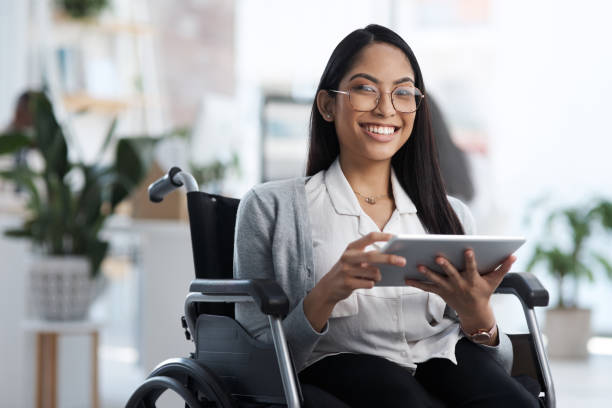
Technology has become an essential tool for people with disabilities, facilitating greater access to information, communication, education, and employment opportunities. In recent years, there has been a significant shift from merely providing access to embracing inclusion for individuals with disabilities. Advancements in technology for people with disabilities have played a crucial role in this transition, opening up new possibilities and breaking down barriers that have long hindered full participation in various aspects of society.
One of the key ways in which technology has fostered inclusion for people with disabilities is through the development of assistive technologies. These tools are specifically designed to accommodate the needs of individuals with disabilities, making it easier for them to navigate and interact with their environment. From screen readers and voice recognition software for individuals with visual impairments to adaptive keyboards and switches for those with mobility challenges, assistive technologies have revolutionized the way people with disabilities access information and communicate with others.
Furthermore, the proliferation of mobile devices and applications has provided new opportunities for people with disabilities to engage with the world around them. Smartphone apps can assist with navigation, communication, organization, and even healthcare management, empowering individuals to live more independently and participate fully in society. For example, apps that provide real-time captioning for people who are deaf or hard of hearing have transformed the way they interact in various settings, from meetings to social gatherings.
In addition to assistive technologies and mobile applications, the use of virtual reality (VR) and augmented reality (AR) has also shown promise in promoting inclusion for people with disabilities. These immersive technologies can simulate real-world scenarios and environments, offering individuals with disabilities the opportunity to experience activities that may be challenging or inaccessible in the physical world. For instance, individuals with mobility impairments can use VR to virtually explore a museum or attend a concert, providing a sense of presence and participation that was previously unattainable.
Another way in which technology is advancing inclusion for people with disabilities is through the concept of universal design. Universal design aims to create products, environments, and systems that are accessible to all people, regardless of their abilities or limitations. By integrating universal design principles into technology development, designers can ensure that their products are usable by individuals with a wide range of disabilities, promoting inclusivity and equal access for all.
Moreover, the rise of artificial intelligence (AI) and machine learning has opened up new possibilities for improving accessibility and inclusion for people with disabilities. These technologies can analyze large amounts of data and make intelligent decisions in real time, offering personalized solutions to meet the unique needs of individuals with disabilities. For example, AI-powered captioning services can accurately transcribe spoken language for individuals who are deaf or hard of hearing, ensuring they can fully participate in conversations and activities.
Despite these advancements, there are still challenges to overcome in ensuring that technology truly promotes inclusion for people with disabilities. Accessibility standards and guidelines must be consistently implemented and enforced to guarantee that digital products and services are usable by everyone. Additionally, there is a need for greater awareness and education around the benefits of inclusive design practices, as well as the importance of including people with disabilities in the development process.
As technology continues to evolve, the role it plays in promoting inclusion for people with disabilities will only grow in importance. By harnessing the power of technology to create accessible and inclusive solutions, we can ensure that individuals with disabilities have equal opportunities to fully participate in society, contribute their unique perspectives, and lead fulfilling lives. From access to inclusion, technology has the potential to empower individuals with disabilities and create a more diverse and inclusive world for all.